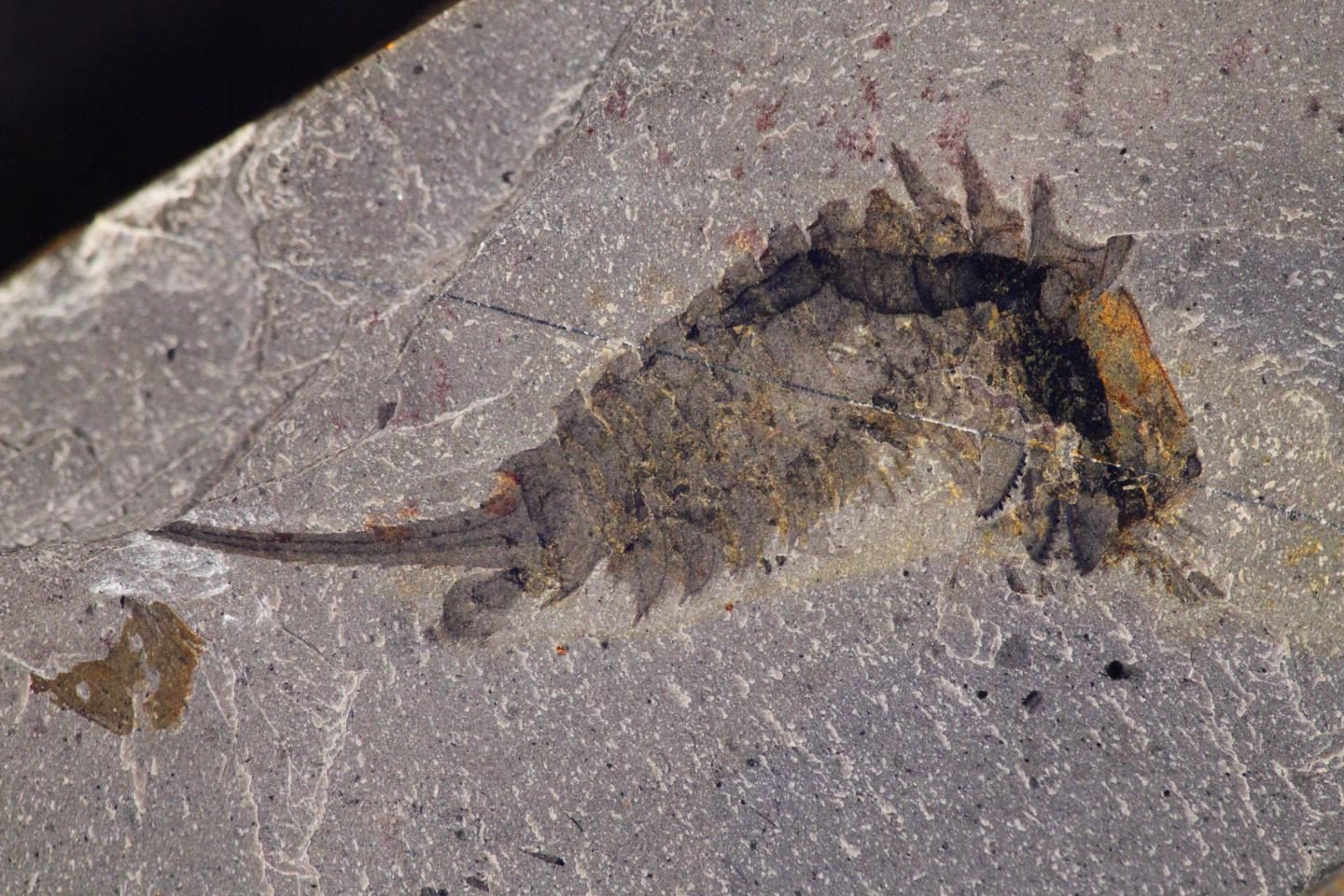
Updated | A miniature ancient sea monster just shy of an inch long was undoubtedly extremely fierce, given its jackknife-like head that it likely used to rip into prey. But since discovering the sea scorpion over a century ago, scientists have struggled to determine just how to classify Habelia optata.
New research—published Friday in the journal BMC Evolutionary Biology—reveals the creature was closely related to all chelicerates, which includes animals living today such as horseshoe crabs, sea spiders and arachnids. All of the critters in this group have chelicerae—a pair of appendages in the front of the mouth—which is how the subgroup received the name “chelicerates.”
“Habelia now shows in great detail the body architecture from which chelicerates emerged, which allows us to solve some long-standing questions,” study author Cédric Aria, a post-doctoral researcher at Nanjing Institute of Geology and Paleontology, said in a statement. “We can now explain why, for instance, horseshoe crabs have a reduced pair of limbs—the chilaria—at the back of their heads.”

Previously, chelicerates were known to have seven pairs of limbs, but modern-day creatures in the subgroup only have six pairs. The reduced limbs are evidence that fully formed appendages once existed in their place, she explained.
After analyzing 41 specimens primarily found in the Burgess Shale Walcott Quarry in British Columbia—27 of which were new—paleontologists found that the Habelia possessed distinctive appendages on its midsection, known as the thorax. Along its body, the critter also had many sharp spines, which were likely used to defend against predators.
“It has a crazy number of spines along the body—pretty much from tail to head it has spines everywhere,” study author Jean-Bernard Caron, senior curator of invertebrate paleontology at the Royal Ontario Museum, told CBC News.
It’s been long known that Habelia belonged to the arthropod group, but confusion lay in which subgroup the creature—who lived 508 million years ago during the Cambrian period—belonged to. Previously, researchers pointed to mandibulates, which is a sister group of chelicerates. Mandibulates’ characterizing feature is its mandible, or jaw. The fossils reveal the Habelia had a similar feature; however, it may be the result of convergent evolution, which is when similar features are developed in species, despite being in different lineages.

“From an evolutionary point of view, Habelia is close to the point of divergence between chelicerates and mandibulates,” Aria said. “But its similarities with mandibulates are secondary modifications of features that were in part already chelicerate in nature. This suggests that chelicerates originated from species with a high structural variability.”
The fierce creature was first described in 1912 by Charles Doolittle Walcott, who was a paleontologist famous for his discovery of the Burgess Shale fossils (some of which were used in this study) in British Columbia, Canada.